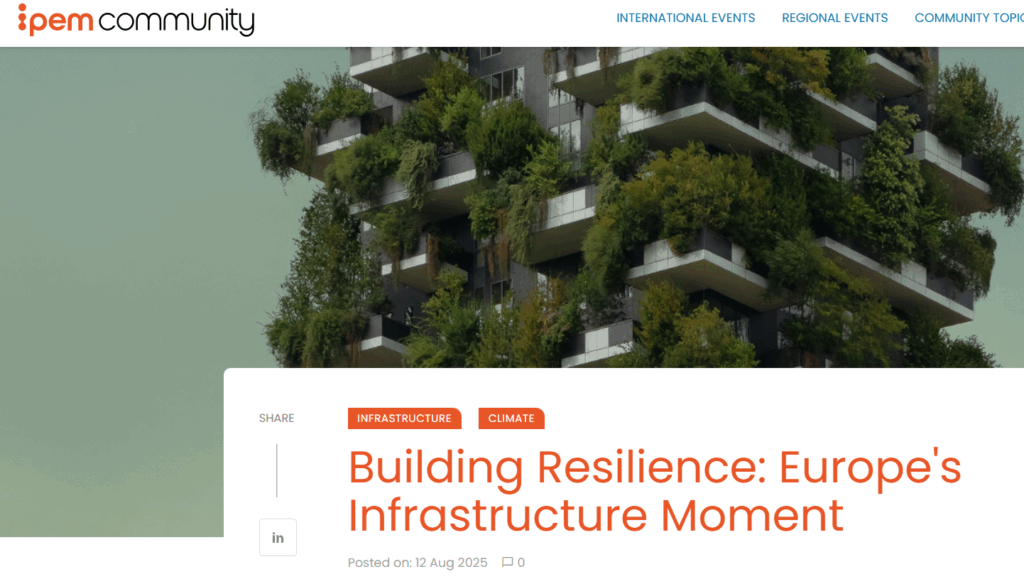
IPEM highlights Scientific Climate Ratings’ role in quantifying climate risk for Europe’s infrastructure

International Private Equity Market (IPEM) showcased Scientific Climate Ratings in an article discussing the need for resilient infrastructure in Europe, the world’s fastest warming continent.
The article highlighted the agency’s science-based approach, which translates climate projections into actionable financial insights for the infrastructure sector.
Author James Williams outlined the escalating impacts of heatwaves, droughts, floods, and storms across the region, noting how these risks threaten energy security, food systems, ecosystems, and critical infrastructure. He also underscored the pivotal role of infrastructure as both highly vulnerable to climate risks and essential to enabling decarbonisation:
“Scientific Climate Ratings translate climate science into financial insights. Their current focus is on the infrastructure sector, where the materiality of climate risk is already visible: from flood-prone roads and airports in Texas to coal-fired power plants in Germany facing early closure under transition policies.”
The article further noted that the ratings enable investors to turn complex climate projections into decision-grade financial metrics, such as expected damage, impacts on cash flows, and risk-adjusted valuations.
Speaking to IPEM, Rémy Estran-Fraioli, CEO of Scientific Climate Ratings, commented:
“Investors are no longer satisfied with abstract ESG scores. They demand forward-looking, asset-level insights they can plug directly into financial models. We are seeing a strong market shift from qualitative disclosure to quantifying the financial impact of climate risk; and that’s exactly the gap we aim to fill.
“What used to be seen as a vague, long-term concern is now creating short-term financial frictions – from renegotiated insurance premiums to impacts on the cost of capital. Quantifying climate risk in consistent, comparable ways is becoming essential for allocating capital wisely and protecting long-term returns in infrastructure.”
Read the full article.
